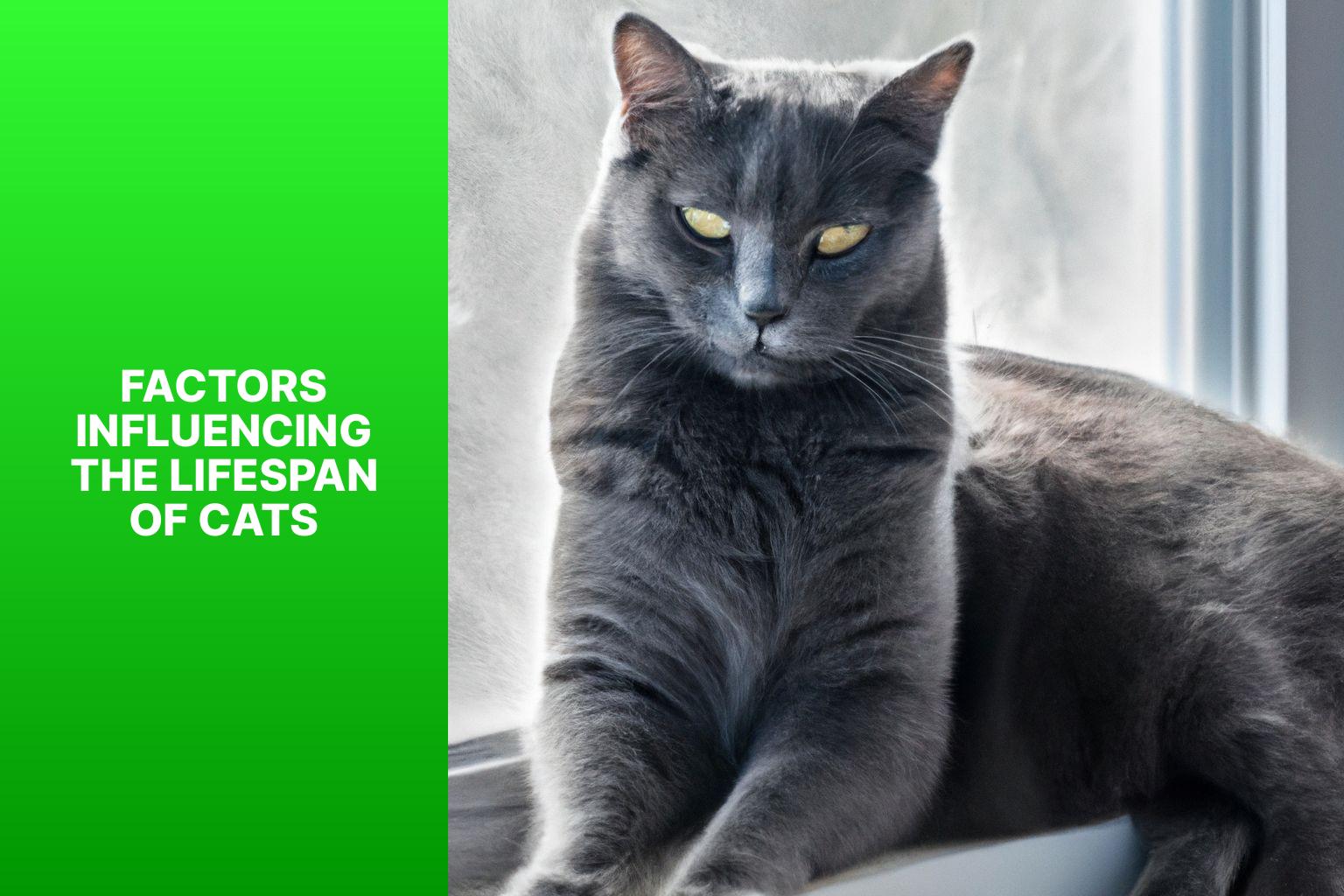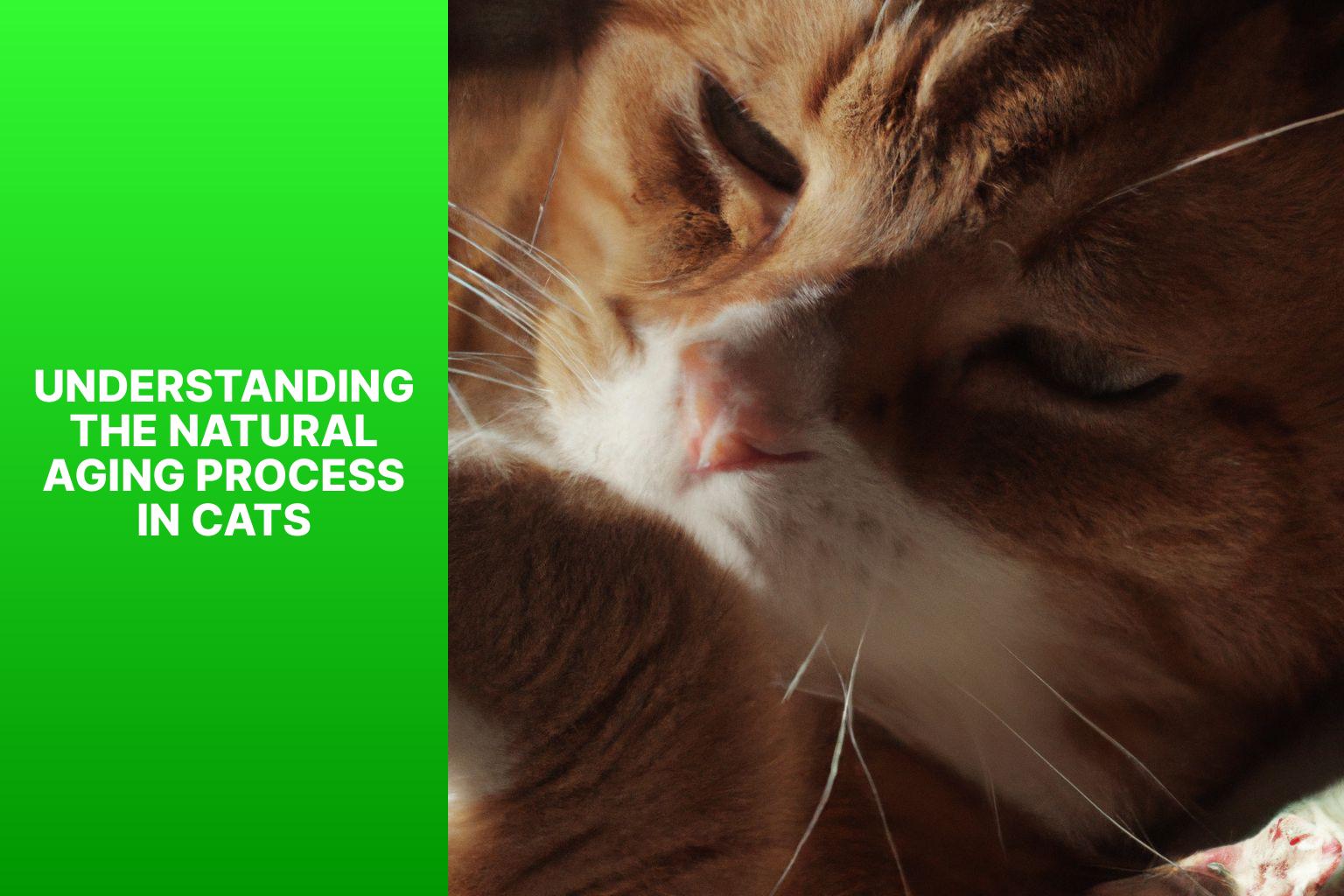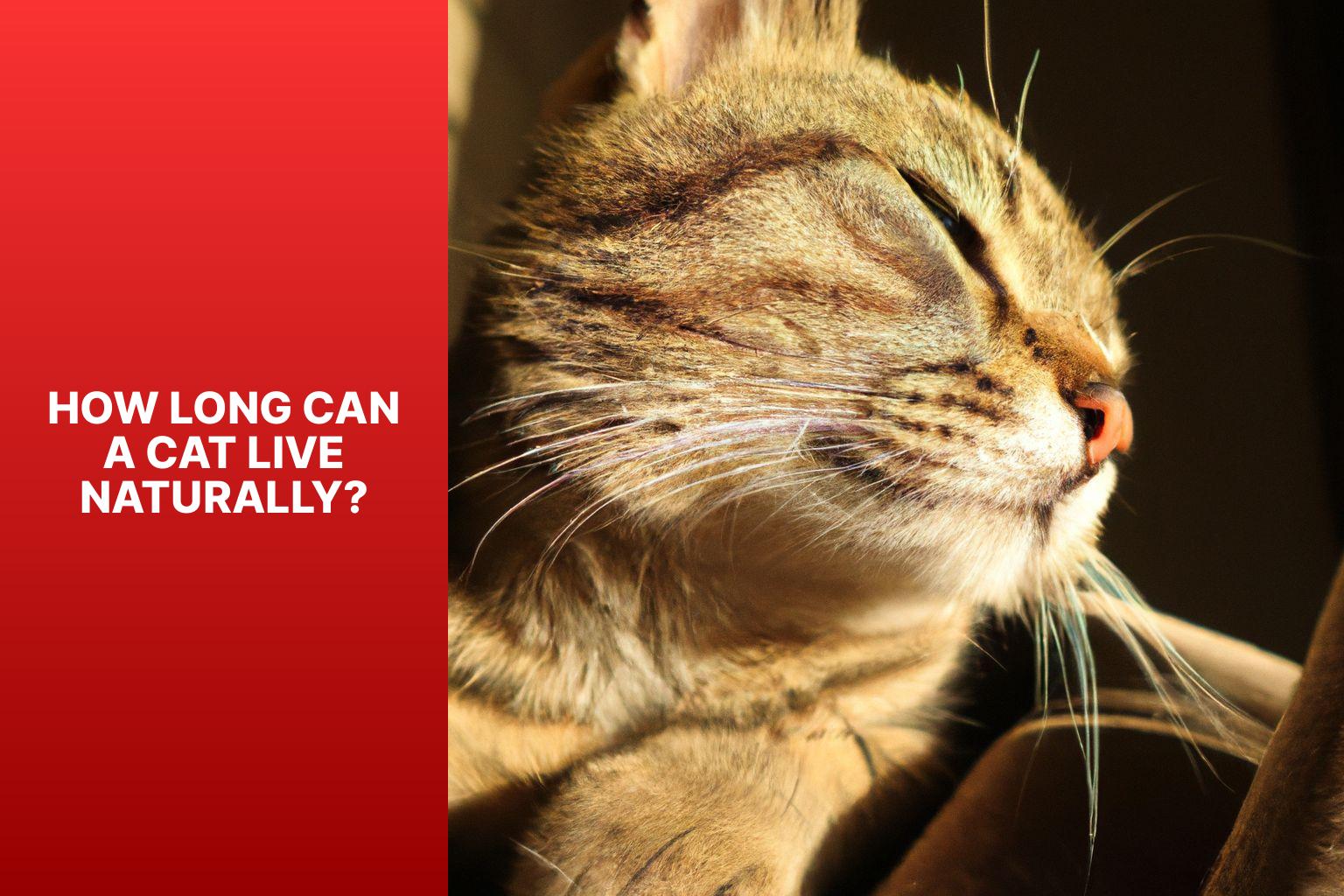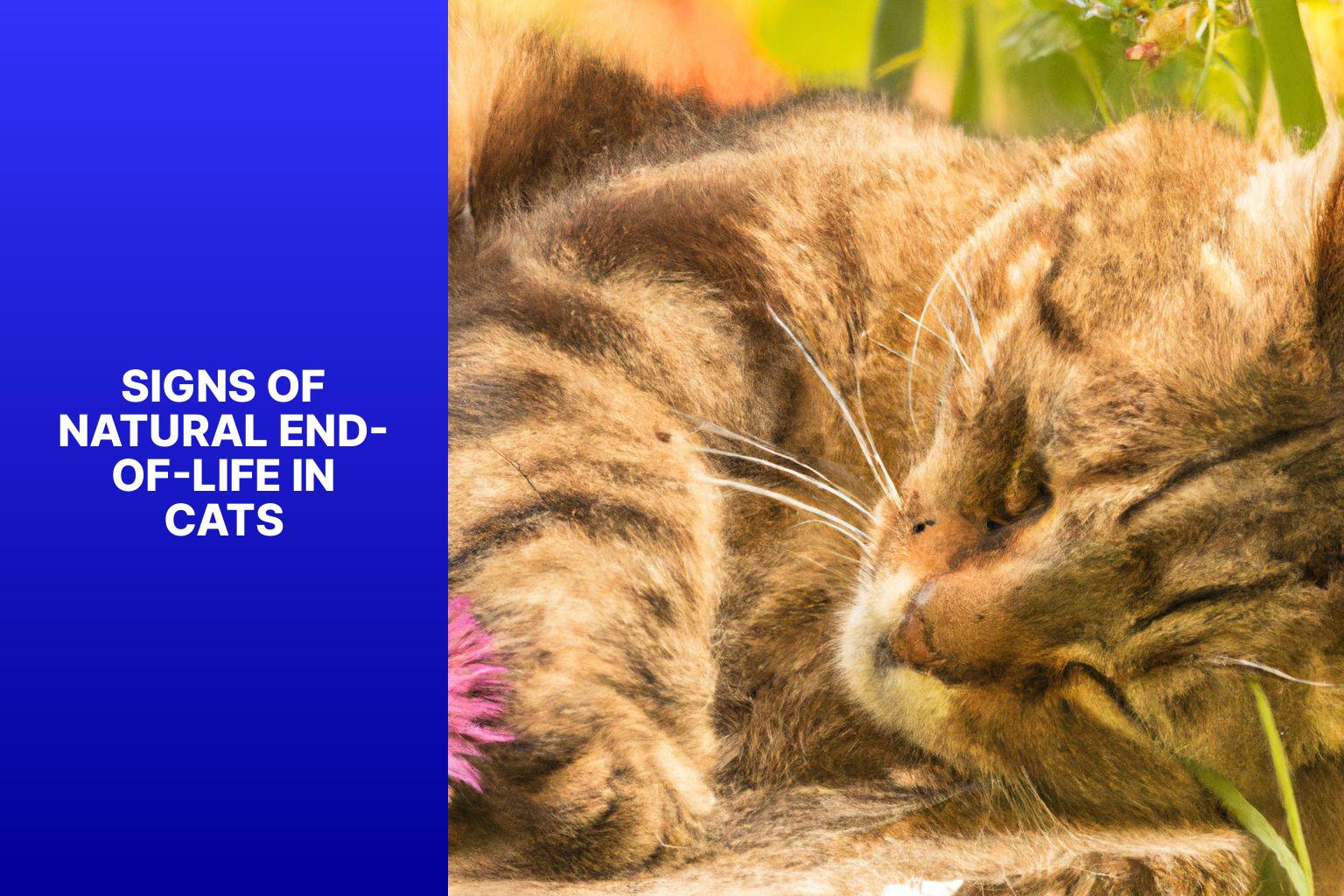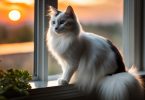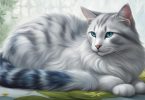Cats, as beloved members of our families, hold a special place in our hearts. As responsible pet owners, it is natural to wonder about the natural lifespan of our feline companions and what we can do to ensure their well-being throughout their lives. Understanding the factors that influence a cat’s lifespan and the aging process they undergo can help us provide the best care for our furry friends. Let’s explore the key factors influencing a cat’s lifespan and the signs of natural end-of-life in cats as outlined in the article:
Factors Influencing the Lifespan of Cats:
- Breed
- Genetics
- Diet and Nutrition
- Exercise and Physical Activity
- Veterinary Care
Understanding the Natural Aging Process in Cats:
- Stages of Life in Cats
- Common Age-Related Changes in Cats
How Long Can a Cat Live Naturally?
- Average Lifespan of Domestic Cats
- Factors Affecting Longevity in Cats
Signs of Natural End-of-Life in Cats:
- Decreased Activity Levels
- Changes in Eating and Drinking Habits
- Weight Loss
- Difficulty Breathing
- Changes in Coat Condition
Caring for an Aging Cat:
- Providing a Comfortable Environment
- Proper Nutrition and Hydration
- Regular Veterinary Check-ups
- Managing Pain and Discomfort
When to Consider Euthanasia for a Cat:
- Consultation with a Veterinarian
- Quality of Life Assessment
- Ensuring a Peaceful Farewell
By understanding these aspects, we can ensure that our cats receive the love, care, and support they need as they age gracefully by promoting their overall well-being and addressing any specific needs they may have.
Key takeaway:
- Cat longevity factors: Breed, genetics, diet, exercise, and veterinary care all play a role in determining a cat’s lifespan.
- Understanding the natural aging process: Cats go through different life stages and experience age-related changes, which should be recognized.
- Signs of natural end-of-life: Decreased activity, changes in eating habits, weight loss, breathing difficulties, and changes in coat condition may indicate a cat approaching the end of its life.
- Caring for aging cats: Provide a comfortable environment, proper nutrition and hydration, regular check-ups, and manage any pain or discomfort.
- Considering euthanasia: Consult with a veterinarian, assess your cat’s quality of life, and ensure a peaceful goodbye when the time comes.
Factors Influencing the Lifespan of Cats
Photo Credits: Www.Catcornerblog.Com by Eugene Rivera
From breed to genetics, diet to exercise, and veterinary care, numerous factors play a vital role in determining the lifespan of our beloved feline companions. Join me on this journey as we uncover the hidden secrets behind the longevity of our cats. Discover how different breeds can influence their lifespan, how genetics can shape their health, and the impact of diet, exercise, and proper veterinary care on the overall well-being of our furry friends. Get ready to delve into the fascinating world of factors influencing the lifespan of cats!
1. Breed
| Breed | Average Lifespan | Size | Temperament |
| Siamese | 10-12 years | Medium | Extroverted, vocal |
| Maine Coon | 12-15 years | Large | Friendly, sociable |
| Persian | 12-15 years | Medium | Gentle, calm |
| Sphynx | 12-16 years | Medium | Curious, energetic |
| Ragdoll | 12-17 years | Medium | Relaxed, affectionate |
Different cat breeds have varying average lifespans. Genetics, diet, and healthcare can influence an individual cat’s lifespan, but some general trends can be observed. Siamese cats usually live for 10-12 years, while Maine Coons have a longer lifespan of 12-15 years. Persian cats and Sphynx cats also tend to live for around 12-15 years, while Ragdolls have a slightly longer average lifespan of 12-17 years.
The size of the breed may impact lifespan. Larger breeds like the Maine Coon may have a slightly shorter lifespan compared to smaller breeds. Individual variations within a breed can still occur.
Temperament can also play a role in a cat’s lifespan. More active and energetic cats may have a higher risk of accidents or injuries, which can potentially impact their longevity.
Considering these factors when choosing a cat can provide a better understanding of the potential lifespan of a specific breed. It’s important to remember that every cat is unique, and individual care and circumstances can greatly influence their lifespan.
2. Genetics
Genetics significantly determine a cat’s lifespan. Different genes can affect a cat’s health and longevity. Here is a table outlining genetic factors that impact a cat’s lifespan:
| Genetic Factor | Impact on Lifespan |
| Longevity Gene | Certain genetic variations may extend a cat’s lifespan. |
| Disease Susceptibility | Genetic predisposition to certain diseases can affect lifespan. For example, some breeds are more prone to specific health conditions like heart disease or kidney disease. |
| Inherited Disorders | Genetic mutations or abnormalities can lead to inherited disorders that may shorten a cat’s lifespan. |
| Immune System Strength | Genetics can influence a cat’s immune system, affecting its ability to fight off infections and diseases. |
| Metabolic Rate | Genetic factors can impact a cat’s metabolic rate, which can affect overall health and longevity. |
It is important to note that genetics are not the sole determinant of a cat’s lifespan. Other factors such as diet, exercise, and veterinary care also contribute. Caring for your cat and providing a healthy lifestyle can optimize their well-being and potentially extend their lifespan.
3. Diet and Nutrition
Cats’ diet and nutrition require careful consideration of 3. Diet and Nutrition factors.
| 1. Balanced Diet | Incorporating 3. Diet and Nutrition into cats’ diet is essential. It should include a balance of proteins, fats, and carbohydrates. This ensures they receive all necessary nutrients for optimal health. |
| 2. Age and Life Stage | Cats have different nutritional needs based on age and life stage, which play a vital role in their 3. Diet and Nutrition. For instance, kittens require more protein and calories for growth, while senior cats may benefit from a diet supporting joint health. |
| 3. Quality Ingredients | Considering 3. Diet and Nutrition, the quality of a cat’s food is crucial. It is important to choose brands with high-quality protein sources and avoid fillers, artificial additives, and excessive preservatives. |
| 4. Water Intake | Incorporating 3. Diet and Nutrition, cats should always have access to fresh water. Adequate moisture is essential for their overall health, especially since cats have a low thirst drive. Wet food can be beneficial in increasing their water intake. |
| 5. Portion Control | Appropriate portion size is crucial in considering 3. Diet and Nutrition to prevent obesity and related health issues in cats. It is advisable to consult with your veterinarian to determine the right amount of food based on your cat’s individual needs. |
By considering these 3. Diet and Nutrition factors and providing a balanced and nutritious diet, cat owners can promote good health and well-being in their feline companions.
4. Exercise and Physical Activity
Exercise and Physical Activity
When it comes to cats’ exercise and physical activity, consider the following:
– Age and health: Cats’ exercise needs vary based on their age and overall health. Kittens and younger cats have higher energy levels and need more playtime for stimulation. Older cats may have limitations due to age-related conditions, so gentle exercise and interactive play can help maintain mobility.
– Indoor vs. outdoor: Whether your cat is indoor or outdoor affects their exercise routine. Indoor cats have less space to roam and may require structured play sessions. Outdoor cats have more opportunities for exercise through natural activities like climbing and hunting.
– Playtime: Regular playtime is crucial for cats to burn energy and maintain a healthy weight. Engage in interactive play with toys like feather wands or laser pointers for at least 15-20 minutes twice a day.
– Environmental enrichment: Provide a stimulating environment with scratching posts, climbing trees, and puzzle toys to encourage cats to be more active. These activities promote natural behaviors and prevent boredom and obesity.
– Encouraging movement: Make exercise enjoyable for cats by using treats or food puzzles to entice them to move around. Create vertical spaces for climbing and provide scratching surfaces to encourage stretching and movement.
5. Veterinary Care
When caring for your cat, veterinary care is essential for their well-being and longevity.
- Regular Check-ups: Schedule annual veterinary check-ups to identify potential health issues early and allow for timely treatment.
- Vaccinations: Administer necessary vaccinations based on your cat’s lifestyle and risk factors.
- Parasite Control: Regularly use flea, tick, and worm treatments to protect your cat from parasites causing health problems. Follow the recommended products and treatment schedule from your veterinarian.
- Dental Care: Don’t overlook dental hygiene for your cat’s overall health. Schedule regular dental check-ups, cleanings, and follow proper dental care routines to prevent dental diseases and promote oral health.
- Surgical Procedures: Ensure any surgical procedures, such as spaying or neutering, are performed by a qualified veterinarian in a safe environment.
Proper veterinary care enhances your cat’s well-being and increases their chances of a long and healthy life. Follow your veterinarian’s advice for the best care for your feline friend.
Understanding the Natural Aging Process in Cats
Photo Credits: Www.Catcornerblog.Com by Peter King
As cats age, they go through a natural aging process that brings about various changes. In this section, we’ll dive into the world of understanding the natural aging process in cats. From exploring the different stages of life in cats to uncovering the common age-related changes they experience, we’ll shed light on the fascinating journey of our feline companions as they gracefully grow older. So, let’s embark on this enlightening exploration of our beloved cats’ natural aging process!
1. Stages of Life in Cats
The stages of life in cats can be divided into the following:
| 1. Kittenhood: | This stage begins from birth and lasts until around 6 months of age. Kittens are highly active and playful, developing their motor skills and social abilities. They rely on their mother for nutrition and learn important behaviors. |
| 2. Adolescence: | From around 6 months to 1 year of age, cats enter their teenage phase. They have increased energy levels and exhibit curious and exploratory behaviors. They establish independence and may test boundaries. |
| 3. Adulthood: | After reaching 1 year of age, cats enter adulthood. This stage can last between 3 to 10 years depending on various factors. Cats in adulthood are settled and have established personalities. They remain active but have more predictable behavior patterns. |
| 4. Senior years: | Cats enter their senior years around 10 years of age. They experience decreased energy levels and signs of aging. They may have reduced mobility and require more care and attention from their owners. Regular veterinary check-ups are crucial during this stage. |
A true story that highlights the stages of life in cats is the tale of Whiskers, a rescue kitten who grew up with a loving family. From his mischievous kittenhood to his adventurous adolescence, Whiskers brought joy and laughter to his family. In adulthood, he became a loyal companion with a unique personality. In his senior years, Whiskers adapted to the changes that came with old age, receiving regular veterinary care in a comfortable environment. Whiskers lived a long and fulfilling life, reminding his family of the stages of life in cats.
2. Common Age-Related Changes in Cats
The common age-related changes in cats, such as decreased energy levels, changes in appetite, weight changes, joint stiffness, and dental issues, are important to monitor. As cats age, they may become less active and spend more time sleeping or resting. It is crucial to maintain a healthy weight in older cats, as they may experience a decrease or increase in appetite and may gain or lose weight. Arthritis and joint stiffness are common in older cats, making it difficult for them to jump, climb, or move around easily. Dental problems, including gum disease or tooth loss, can also occur with age, highlighting the importance of regular dental care for their oral health.
To ensure the well-being of aging cats, it is essential to provide them with a comfortable environment that caters to their changing needs. This includes offering soft bedding, easy access to litter boxes, and ramps or steps for easier mobility. Focusing on high-quality, age-appropriate food and providing access to fresh water is crucial for proper nutrition and hydration. Regular veterinary check-ups are necessary to detect any age-related health issues or changes early on. Managing any pain or discomfort with appropriate medications or therapies can greatly enhance the quality of life for aging cats.
How Long Can a Cat Live Naturally?
Photo Credits: Www.Catcornerblog.Com by Ethan Nguyen
Curious about a cat’s natural lifespan? Let’s dive into the intriguing world of feline longevity.
Discover the average lifespan of our feline friends and unravel the factors that can influence their time on Earth. From genetics to lifestyle, we’ll explore what makes a cat’s life tick, and why some cats live longer than others.
So, hold tight as we embark on this enlightening journey into the natural lifespan of these beloved creatures.
1. Average Lifespan of Domestic Cats
The average lifespan of domestic cats can vary depending on factors such as genetics, diet and nutrition, exercise and physical activity, and veterinary care.
Cats with a healthy genetic background tend to live longer and are less prone to genetic diseases.
Providing proper nutrition and a balanced diet can contribute to a longer lifespan.
Regular exercise helps keep cats fit and healthy, preventing obesity and maintaining overall well-being.
Regular veterinary check-ups and preventative care are crucial for identifying and addressing health issues early on.
It is important to note that while the average lifespan of domestic cats is around 15 years, some cats can live well into their 20s or even older with proper care and a healthy lifestyle.
Providing a nurturing environment and attention to their well-being can increase the chance of your cat living a long and happy life.
2. Factors Affecting Longevity in Cats
Factors Affecting Longevity in Cats:
– Breed: Certain cat breeds have a longer average lifespan. For example, Siamese and Ragdoll breeds tend to live longer than Persian or Bengal breeds.
– Genetics: Genetics play a significant role in determining how long a cat will live. Cats with healthy genetics and minimal genetic disorders generally have a longer lifespan.
– Diet and Nutrition: Providing a well-balanced diet with high-quality ingredients can have a substantial impact on a cat’s overall lifespan. Nutritional deficiencies or improper feeding practices can potentially lead to health problems and reduce their longevity.
– Exercise and Physical Activity: Regular exercise is key to maintaining a healthy weight and reducing the risk of obesity-related diseases. It also contributes to the overall well-being of a cat, which can result in a longer lifespan.
– Veterinary Care: Consistent medical check-ups, vaccinations, and preventive care are vital for identifying and addressing potential health issues early on. By doing so, the chances of a longer and healthier life for your cat are increased.
Pro-tip: While these factors are important in influencing a cat’s longevity, it’s important to remember that each cat is unique. Providing love, attention, and a safe environment are equally crucial in promoting a long and fulfilling life for your feline companion.
Signs of Natural End-of-Life in Cats
Photo Credits: Www.Catcornerblog.Com by Steven Green
As a beloved pet owner, it’s essential to be attuned to the signs that may indicate a cat’s natural end-of-life journey. In this section, we’ll uncover the subtle indications that can provide insights into your feline companion’s well-being. From decreased activity levels to changes in eating and drinking habits, weight loss, difficulty breathing, and alterations in coat condition, we’ll explore these telltale signs that can guide us in understanding our cats’ natural transition. Let’s delve into the fascinating world of feline end-of-life and gain a deeper appreciation for our furry friends.
1. Decreased Activity Levels
Observing your cat for any changes in behavior and overall well-being is essential, especially when it comes to their activity levels. If you notice that your cat is displaying less interest in playing or exploring, has decreased energy levels, or shows reluctance towards physical activities, it could be a sign of decreased activity levels. Similarly, if your cat’s appetite or interest in food decreases, if there are changes in grooming habits, or if your cat seems more withdrawn or less sociable, these could also indicate decreased activity levels.
It is important to keep in mind that decreased activity alone may not necessarily indicate a serious health issue. Nevertheless, if you observe a persistent decrease in activity or notice any other signs of illness or discomfort, it is highly recommended to consult with a veterinarian for a proper diagnosis and appropriate treatment.
2. Changes in Eating and Drinking Habits
Changes in eating and drinking habits in cats can indicate underlying health issues. It is important to monitor a cat’s eating and drinking patterns and consult a veterinarian if there are any significant changes.
Notable changes in eating habits to watch out for include a decrease in appetite, sudden weight loss, or refusal to eat. These changes may suggest dental problems, gastrointestinal issues, or a more serious underlying condition.
It is also crucial to pay attention to changes in drinking habits. If a cat suddenly starts drinking excessively or shows a decreased interest in drinking water, it could be a sign of kidney problems, diabetes, or hyperthyroidism. It is important not to overlook these changes.
Occasional variations in appetite or drinking behavior may not be concerning, but if these changes persist for more than a few days or are accompanied by vomiting or lethargy, it is recommended to seek veterinary attention.
It is advisable to regularly observe a cat’s eating and drinking habits for their overall well-being. Early identification of changes allows for prompt veterinary care and potentially improves the cat’s health outcome.
3. Weight Loss
When it comes to cat weight loss, it is important to monitor their food intake and overall health. Here is a table of key factors to consider:
– Diet Adjustment: It is advisable to consult a veterinarian for a well-balanced and calorie-controlled diet plan for effective weight loss.- Food Type: Choose high-quality, nutrient-dense cat food that promotes healthy weight management.- Portion Control: Measure the food based on your cat’s weight and make adjustments as necessary.- Feeding Schedule: Establishing a regular feeding schedule helps prevent overeating and promotes portion control.- Exercise and Play: Engage your cat in regular physical activity to help them burn calories and maintain a healthy weight.- Monitoring Progress: It is important to regularly weigh your cat and observe any changes in their body condition to ensure gradual and healthy weight loss.- Veterinary Check-ups: Regular vet appointments are crucial in monitoring your cat’s weight, overall health, and addressing any underlying medical issues that may contribute to weight loss.
Remember, cat weight loss should be a gradual process and it is best supervised by a veterinarian. If your cat experiences sudden or excessive weight loss, it is important to seek immediate veterinary attention to rule out any underlying health concerns.
4. Difficulty Breathing
Difficulty breathing in cats is a serious symptom that should not be ignored. It is important to seek veterinary attention immediately if your cat shows signs of difficulty breathing.
There are several possible causes for this condition, including respiratory infections, allergies, asthma, heart disease, and lung conditions.
To determine the underlying cause and provide appropriate treatment, the veterinarian will conduct a thorough physical examination. Further diagnostic tests, such as X-rays, bloodwork, or a bronchoscopy, may be recommended to evaluate the respiratory system.
Treatment options will depend on the specific cause and may involve medications like antibiotics, anti-inflammatory drugs, bronchodilators, or diuretics. In severe cases, oxygen therapy or hospitalization may be necessary.
Creating a stress-free and well-ventilated environment for your cat can help alleviate respiratory symptoms. It is also important to keep your cat’s vaccinations up to date and avoid exposure to smoke or strong fumes, as these can reduce the risk of respiratory problems.
Regular follow-up visits with the veterinarian are crucial if your cat is diagnosed with a chronic respiratory condition.
By promptly seeking veterinary attention and following the recommended treatment plan, you can significantly improve your cat’s quality of life and overall well-being.
5. Changes in Coat Condition
When caring for an aging cat and noticing changes in coat condition, it is essential to provide a comfortable environment with regular grooming and brushing. Proper nutrition and hydration can help maintain coat health. Regular veterinary check-ups can detect any underlying health issues affecting the coat. Addressing these changes and providing necessary care ensures the cat’s coat remains healthy and comfortable in their older years.
- Shedding: As cats age, they may experience increased shedding. The fur may become thinner and more prone to shedding. Regular grooming and brushing can manage this natural process.
- Dullness: Another change in coat condition is dullness. The fur may lose its shine. This can be due to changes in diet or health issues. A balanced and nutritious diet and regular veterinary check-ups can help maintain a healthy coat.
- Matted fur: Older cats may develop matted fur due to decreased mobility and difficulty in grooming. Regular brushing can prevent matting and keep the coat healthy.
- Texture changes: The texture of the fur may become coarse or brittle with age. Proper nutrition, hydration, and regular grooming can maintain the softness and texture of the coat.
- Color changes: Some cats may experience graying or fading of the coat as they age. Monitoring for any sudden or significant changes in color is important, as it could indicate underlying health issues.
Caring for an Aging Cat
As our beloved feline companions age, it becomes essential that we provide them with the utmost care and attention. In this section, we’ll discover strategies to ensure the well-being of our aging cats. From creating a comfortable environment to addressing their nutritional needs, we’ll explore effective ways to support their overall health and happiness. We’ll discuss the importance of regular veterinary check-ups and managing any pain or discomfort they may experience. Join us as we navigate the journey of caring for our elder cats with love and compassion.
1. Providing a Comfortable Environment
Providing a Comfortable Environment
Ensuring a warm and cozy bed, away from drafts, with soft bedding to support their joints, is crucial for providing a comfortable environment for an aging cat. It is also important to create a quiet space for rest and relaxation. Placing easily accessible litter boxes in convenient locations and keeping them clean is vital for their comfort. Having multiple water bowls and food dishes throughout the house prevents discomfort. To promote mental and physical stimulation, it is recommended to provide access to stimulating toys and scratching posts. Using ramps or steps can help prevent strain on their joints when reaching elevated surfaces. Regular grooming is necessary to maintain coat condition and prevent discomfort. Giving love, attention, and affection will create a nurturing environment that enhances your aging cat’s well-being. By addressing these aspects, you can effectively provide a comfortable environment for your aging cat.
2. Proper Nutrition and Hydration
Proper nutrition and hydration are vital for a cat’s health and well-being. Consider these factors:
– Diet: Cats need a protein-rich diet with animal-based proteins like chicken or fish. It is important to avoid foods with fillers, artificial preservatives, and excessive carbohydrates to ensure proper nutrition and hydration.
– Water: Cats should always have access to clean water to prevent urinary tract issues. Providing a water bowl and fountain can help encourage hydration and maintain their overall well-being.
– Moderation: It is crucial to feed your cat proper portion sizes to prevent obesity and related health problems, ensuring they receive the appropriate nutrition and hydration.
– Special dietary needs: Some cats may have specific dietary requirements due to allergies or medical conditions. Consulting a veterinarian for guidance is essential to provide them with the necessary nutrition and hydration.
– Supplementation: Vets may suggest adding supplements like omega-3 fatty acids, joint supplements, or probiotics to your cat’s diet to ensure they receive proper nutrition and hydration.
In ancient Egypt, cats were revered and kept as pets. Egyptians understood the importance of nutrition and hydration, feeding their cats fish, birds, and small animals to provide them with the necessary nutrients and hydration. Water was readily available through the Nile River, and cats stayed hydrated through hunting. This long history of proper care and nutrition between humans and cats highlights the significance of proper nutrition and hydration for their well-being.
3. Regular Veterinary Check-ups
Regular veterinary check-ups are crucial for maintaining your cat’s health and promoting longevity. It is essential to schedule annual check-ups with a veterinarian to ensure comprehensive health examination. This allows for the assessment of overall health, early detection of potential issues, and administration of necessary vaccinations.
Monitoring your cat’s weight and body condition is also an important part of regular check-ups. Your vet can provide guidance on maintaining an ideal weight and offer dietary recommendations if necessary. By addressing obesity, you can prevent potential health problems such as diabetes and joint issues in cats.
Dental care is another vital aspect of check-ups. Your vet will check your cat’s dental health and provide necessary dental cleanings and oral care to prevent issues like gum disease and tooth decay, promoting good overall health.
Regular check-ups also help ensure your cat is protected against parasitic infestations like fleas, ticks, and worms. Your vet can recommend appropriate preventive treatments and administer vaccinations as needed.
Health screenings, including blood tests and urinalysis, may be conducted during check-ups to detect underlying conditions early on. These screenings can help identify kidney disease, liver problems, diabetes, and other health issues.
Remember, prioritizing regular veterinary check-ups is crucial for maintaining your cat’s well-being and detecting problems before they become serious. This proactive approach to care will ensure that your cat receives the necessary attention and enjoys a long and healthy life.
4. Managing Pain and Discomfort
Managing pain in cats is crucial for their well-being. Here are some strategies to help alleviate their pain and discomfort:
1. Medication: Consult with a veterinarian to prescribe appropriate pain medications that can reduce inflammation, alleviate pain, and improve comfort levels.
2. Environmental modifications: Create a comfortable environment by providing soft bedding, warmth, and quiet spaces to minimize discomfort and stress.
3. Dietary adjustments: Include supplements like fish oil or glucosamine in the cat’s diet to reduce joint inflammation and improve mobility.
4. Physical therapy and exercise: Under the guidance of a veterinarian or animal rehabilitation specialist, engage in gentle exercises and physical therapy to improve muscle strength, joint flexibility, and alleviate discomfort.
5. Massage and acupuncture: Consider alternative therapies such as massage and acupuncture to stimulate blood flow, relieve muscle tension, and provide pain relief.
6. Regular monitoring and check-ups: Schedule regular veterinary check-ups to assess the cat’s condition, identify any changes, and adjust the management plan accordingly.
7. Stress management: Minimize stress levels to indirectly manage pain and discomfort by providing a calm environment, reducing exposure to stressful stimuli, and using pheromone diffusers for anxiety relief.
By implementing these strategies and working closely with a veterinarian, you can effectively manage your cat’s pain and discomfort, ensuring a better quality of life for your feline companion.
When to Consider Euthanasia for a Cat
When it comes to our beloved feline companions, making difficult decisions can be heart-wrenching. In this section, we’ll dive into the crucial topic of when to consider euthanasia for a cat. We’ll explore key factors such as consulting with a veterinarian, assessing the cat’s quality of life, and ensuring a peaceful farewell. By shedding light on these aspects, we aim to provide guidance and support during this sensitive time for cat owners.
1. Consultation with a Veterinarian
Consultation with a veterinarian is crucial when dealing with a cat’s end-of-life phase. They can provide expert advice and assess your cat’s condition. A veterinarian has the expertise to conduct a thorough medical assessment, determining the severity of your cat’s condition and providing a prognosis. They can prescribe appropriate medications to alleviate your cat’s pain or discomfort.
Veterinarians also take a holistic approach to end-of-life care, considering both the physical health and emotional well-being of your cat. They can evaluate your cat’s quality of life and offer guidance on when it may be compassionate to consider euthanasia.
It is important to remember that veterinarians understand the emotional challenges associated with end-of-life decisions and can offer support and empathy during this difficult time. Consulting with a veterinarian is essential to ensure the best care and support for your cat throughout their end-of-life journey.
2. Quality of Life Assessment
The quality of life assessment for an aging cat is crucial in determining their overall well-being and whether they may be experiencing any discomfort or suffering. There are several factors that need to be taken into consideration for this assessment:
- Activity levels: It is important to observe whether the cat engages in activities that they used to enjoy. A decline in activity levels may indicate pain or discomfort.
- Eating and drinking habits: Monitoring any changes in appetite and thirst is essential. A sudden loss of interest in food or excessive drinking can be indicators of underlying health issues.
- Weight loss: If the cat experiences significant and unexplained weight loss, it may suggest a decline in their overall condition and well-being.
- Difficulty breathing: Labored breathing, wheezing, or coughing can be signs of respiratory problems or congestive heart failure.
- Coat condition: Changes in the cat’s fur, such as excessive shedding, matting, or a dull appearance, may indicate health issues or decreased grooming habits.
Based on these observations, if a cat exhibits multiple signs of discomfort or a decline in their quality of life, it is advisable to discuss their condition with a veterinarian. The veterinarian can provide guidance and recommendations for managing any pain or discomfort, as well as determining the best course of action for a peaceful farewell if necessary.
3. Ensuring a Peaceful Farewell
- Spend quality time with your cat: Give your cat love and attention in their final days. Cuddle, pet, and talk to them to offer reassurance and comfort.
- Create a calm and quiet environment: Make sure your cat has a peaceful space to rest without disturbances. Limit loud noises to promote relaxation.
- Monitor and manage pain: If your cat is in pain or discomfort, consult your veterinarian for appropriate pain management options. Ensuring their physical comfort is crucial for a peaceful farewell.
- Provide their favorite foods: Offer your cat their preferred foods and treats, if they have an appetite. This can help maintain their comfort and happiness.
- Keep them hydrated: Make sure your cat always has access to fresh water to prevent dehydration. Consult your vet about providing subcutaneous fluids if needed.
During this challenging time, rely on your veterinarian’s guidance and support. They can help you make informed decisions about your cat’s wellbeing and provide compassionate advice for a peaceful farewell. Cherish every moment with your beloved feline companion and give them the love and care they deserve.
Some Facts About “How Long Does It Take for a Cat to Die Naturally”:
- ✅ The dying process of a cat can take several months, a few weeks, or even a couple of days. (Source: Our Team)
- ✅ Loss of appetite, weight loss, weakness, lethargy, and lack of grooming are symptoms commonly observed in a dying cat. (Source: Our Team)
- ✅ During the active dying phase, a cat may experience decreased body temperature, irregular heartbeat, and abnormal breathing. (Source: Our Team)
- ✅ Providing a warm and comfortable environment, emotional support, and staying with the cat are important ways to help them during the dying process. (Source: Our Team)
- ✅ Euthanasia may be considered if the cat is in extreme pain and discomfort in order to end their suffering more humanely. (Source: Our Team)
